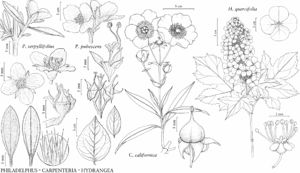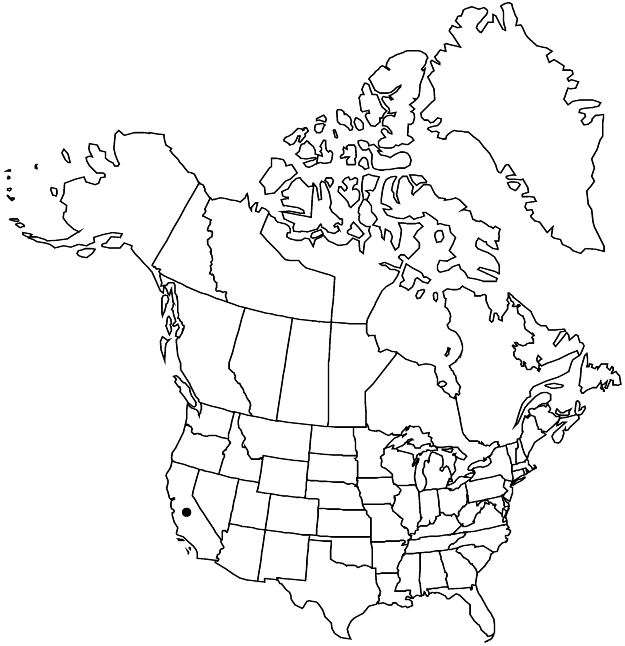Carpenteria californica
Smithsonian Contr. Knowl. 6(2): 12, plate 7. 1853.
Stems 10–30 (–40) dm. Twigs glabrous or sparsely to moderately appressed-pubescent. Leaves: petiole (2–) 5–10 mm, appressed-pubescent abaxially, glabrous or sparsely pubescent adaxially; blade 2.7–8.5 (–10) × 0.8–2.5 (–3.6) cm, base attenuate, apex acute to rounded, abaxial surface whitish, densely appressed-tomentulose, adaxial green, glabrous. Inflorescences open; peduncle 1.5–5 cm, glabrous or sparingly appressed-pubescent; bracts prominent, sessile. Pedicels 1.5–5.2 mm, sparsely to densely strigose. Flowers fragrant; hypanthium 2–4 × 8–13 mm; sepals (6–) 8–14 × (3–) 4–6 mm, margins entire, apex acute to acuminate, abaxial surface glabrous or sparingly pubescent except for tomentulose tip; petals 20–40 × 20–36 (–40) mm; filaments 4–9 × 0.2–0.6 mm; anthers 0.9–1.1 mm; style 3.5–6 mm. Capsules 10–12 × 8–12 mm. Seeds 0.7–1 mm. 2n = 20.
Phenology: Flowering Apr–Jun.
Habitat: Dry, rocky slopes in chaparral and lower ponderosa pine woodlands.
Elevation: 300–1500 m.
Discussion
Carpenteria californica is a fire-adapted shrub endemic to the central and southern Sierra Nevada Foothills between the Kings and San Joaquin rivers, Fresno County (R. Casamajor 1950). Rare in the wild, it has a long history of cultivation in both Europe and the United States, including elsewhere in California (N. H. Cheatham 1974), where it is prized for its lightly scented, showy flowers and attractive, persistent foliage. The plant does well in sunny or partially shaded, sheltered sites with well-drained soils.
Selected References
None.
Lower Taxa
"dm" is not declared as a valid unit of measurement for this property."dm" is not declared as a valid unit of measurement for this property."connate" is not a number. "distinct" is not a number.

